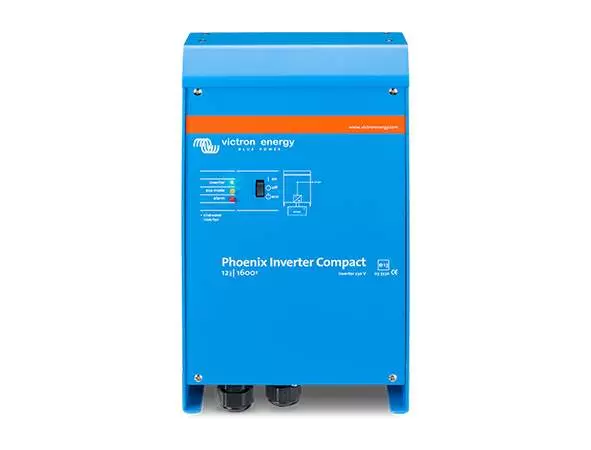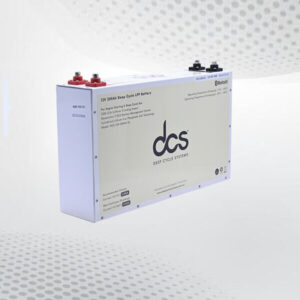Are you ready to take your power needs off the grid and into your hands? Whether you’re planning a weekend camping trip, gearing up for a road adventure, or simply want a reliable backup during unexpected outages, choosing the right power inverter 2000W can be a game changer. With so many options flooding the market, finding the perfect fit might feel overwhelming. But fear not! In this ultimate guide, we’ll decode everything from wattage calculations to essential features that ensure you get maximum performance and reliability tailored specifically to your needs. Say goodbye to confusion and hello to empowerment as we navigate through the world of 2000W power inverters together! Let’s plug in and get started!
Introduction to 2000W Power Inverters
Are you ready to take your power supply game to the next level? A 2000W power inverter can be a game changer, providing reliable energy for all your devices when you’re on the go or facing an unexpected outage. Whether you’re camping in the wilderness, tailgating at your favorite sports event, or simply need backup power at home, understanding how these units work is key to making an informed decision. In this guide, we’ll explore everything you need to know about choosing the perfect 2000W power inverter tailored specifically for your needs. Get ready to harness the power!
Understanding 2000 Watt Inverter and How It Work
An inverter is a crucial piece of equipment that converts direct current (DC) power from a battery or solar panel into alternating current (AC) power, which is needed to run most household appliances. A 2000 watt inverter is a common choice for providing enough power to run multiple devices simultaneously, making it an ideal option for both recreational and emergency use.
How does a 2000 watt inverter work?
The core function of an inverter is to convert the DC power from a battery or solar panel into AC power, mimicking the utility grid’s electricity. In simple terms, the input DC power is converted into high-frequency AC signal through electronic components such as transistors and capacitors. Then, this AC signal goes through a transformer that steps up the voltage to match the standard household voltage of 120 volts.
One crucial aspect of choosing an inverter is its surge capacity, which refers to its ability to deliver short bursts of higher watts than its continuous rated output. Inverters with higher surge capacities are typically more expensive but can handle peak loads better without getting overloaded or damaged.
Why choose a 2000 watt inverter?
A 2000 watt inverter strikes the perfect balance between being powerful enough to run multiple devices simultaneously while also being compact and portable enough for outdoor use. It can easily power essential household appliances like microwaves, refrigerators, laptops, TVs, fans, lights and more.
Another significant advantage of choosing a 2000 watt inverter over other options like smaller inverters is that it has dual outlets allowing you to plug-in two devices simultaneously. This feature makes it ideal for camping trips or as backup power during emergencies when multiple devices may need charging at once.
Why Do You Need a Inverter Charger?
An inverter charger is essential for anyone looking to convert DC power from batteries into usable AC power. This is especially useful in situations where access to traditional electricity sources is limited. Whether you’re camping, traveling in an RV, or preparing for emergencies, a reliable inverter ensures that your devices stay powered. It can charge laptops, run small appliances, and even support medical equipment when needed.
Flexibility is another key advantage. With this wattage capacity, you can effectively handle multiple devices simultaneously without the fear of overloading circuits. Additionally, having a 2000W inverter empowers off-grid living enthusiasts. It opens up possibilities for sustainable energy use by enabling solar panel integration. Enjoy the freedom of powering your lifestyle wherever you go with this versatile tool at your disposal.
Factors to Consider When Choosing a Inverter 2000w
When selecting an inverter 2000w, wattage and capacity are crucial. Ensure the inverter meets your peak load requirements. Adding up the wattage of all devices you plan to use is essential for proper functioning. Next, consider the type of waveform. Pure sine wave inverters deliver clean power, ideal for sensitive electronics. Modified sine wave options can be more affordable but may not work well with every device.
Efficiency plays a significant role too; higher efficiency means less energy loss during conversion. Look for models that offer durability and long-lasting performance under various conditions. Safety features shouldn’t be overlooked either. Overload protection, short circuit prevention, and thermal shutdown capabilities keep your electronics safe while powering them on the go.
– Wattage and Capacity
When selecting a 2000W power inverter, wattage and capacity are critical. These figures determine what devices you can run simultaneously. A 2000W inverter handles various appliances, but understanding your needs is essential.
Consider the total wattage of all devices you’ll connect. For example, if you’re powering a refrigerator (around 600-800 watts) alongside some lights and electronics, ensure combined usage doesn’t exceed the inverter’s limit.
Keep in mind that many appliances require extra power during startup. This surge can be significantly higher than their running wattage. Always factor this into your calculations to avoid tripping circuits or damaging equipment. Lastly, think about future needs as well. If you plan to add more devices later on, opting for an inverter with a bit more capacity might save you from needing another purchase down the line.
– Type of Waveform (Pure Sine vs Modified Sine)
When choosing a 2000W power inverter, the type of waveform it produces is crucial. You typically encounter two options: pure sine wave and modified sine wave.
Pure sine wave inverters generate a smooth, consistent current. This makes them ideal for sensitive electronics like laptops and medical equipment. They mimic the electricity you receive from your home’s wall outlets. If you want to ensure optimal performance without any hiccups, this is often the go-to choice.
Modified sine wave inverters are more budget-friendly but come with limitations. They produce a choppier waveform that can create issues with certain devices. Fans might run hotter, and chargers may not work effectively. While they can power most household appliances without problems, caution is warranted for delicate gadgets. Understanding these differences will help you match the right inverter to your specific needs.
– Efficiency and Durability
When choosing a 2000W power inverter, efficiency is key. An efficient model converts DC to AC power with minimal loss. This translates to more usable energy and longer battery life.
Durability also plays an essential role in your decision. A sturdy inverter can withstand harsh environments and extended use without failing. Look for models made from high-quality materials that resist wear and tear over time. Additionally, consider the cooling system of the inverter. Efficient heat dissipation helps prevent overheating during operation, ensuring longevity.
Opt for units with good reviews regarding their performance under various conditions. Reliability matters when you depend on it for essential devices or appliances. Investing in an efficient and durable power inverter means peace of mind during camping trips or emergency situations at home.
– Safety Features
When choosing a 2000W power inverter, safety features should be at the forefront of your decision. Look for options that include overload protection. This prevents damage if you exceed the inverter’s capacity. Short circuit protection is another essential feature. It automatically shuts off power to avoid serious electrical hazards.
Temperature control adds an extra layer of security by preventing overheating during extended use. Many modern inverters come with fans or thermal sensors to help manage this. Also, consider models with low battery voltage shutdown. This feature ensures that your car battery doesn’t drain completely when using the inverter, preserving its lifespan and performance. Finally, some inverters offer fuses or circuit breakers to stop current flow if something goes wrong. These built-in safeguards provide peace of mind while operating your devices away from home.
Top Brands and Models in the Market
When it comes to 2000W power inverters, a few brands consistently stand out. Renowned for quality and reliability, brands like AIMS Power and Samlex America offer impressive models that cater to varied needs.
AIMS Power’s PICO series boasts pure sine wave output, ideal for sensitive electronics. Its compact design makes it perfect for travel or smaller spaces. Meanwhile, the Samlex PST-2000-12 is celebrated for its robust build and efficiency. It handles high surge loads with ease.
For budget-conscious buyers, the BESTEK 2000W inverter provides great value without compromising on essential features. This model delivers modified sine wave output but remains popular among casual users.
Another noteworthy contender is Energizer’s EN2000P. Known for its lightweight structure and user-friendly interface, it appeals to those new to power inverters while still packing a punch with reliable performance. Each choice has unique strengths tailored to diverse applications.
Installation and Usage Tips for Your 2000w inverter
Proper installation is key to maximizing the performance of your 2000w inverter. Start by selecting a suitable location that is dry, cool, and well-ventilated. Avoid placing it near heat sources or in damp areas.
When connecting the inverter to your battery, use appropriately sized cables to minimize voltage drop. Ensure all connections are tight and secure; loose connections can lead to overheating. Before powering up devices, double-check their total wattage against the inverter’s capacity. This helps prevent overloads that could damage both the inverter and your equipment.
Keep an eye on temperature levels during operation. Most inverters have built-in fans for cooling but always ensure airflow isn’t obstructed. Lastly, remember to turn off appliances when not in use. This conserves energy and prolongs battery life while ensuring safe operation of your system.
Conclusion
Selecting the right power inverter 2000W can significantly enhance your efficiency, whether you’re powering appliances during a camping trip or providing backup energy at home. The key is to evaluate your specific needs against the features available in various models. Consider wattage requirements first. Knowing how much power you need will prevent you from investing in an inverter that’s either too weak or unnecessarily powerful. Pay attention to waveform types as well; pure sine wave inverters are often better for sensitive electronics while modified sine wave options may suffice for less delicate devices. Efficiency and durability also play vital roles. Look for products with high-efficiency ratings that promise longevity under regular use conditions.
Frequently Asked Questions
1. What is a power inverter 2000W and what can it be used for?
A 2000W power inverter is a device that converts direct current (DC) electricity from a battery into alternating current (AC) electricity, allowing you to use your electronic devices and appliances on the go. It can be used for various purposes such as powering small household appliances like laptops, TVs, and lights when camping or during power outages.
2. How much power can a 2000W power inverter handle?
As the name suggests, a 2000W power inverter has a maximum capacity of handling up to 2000 watts of continuous electricity load. However, it is important to note that this may vary depending on the specific model and its features.
3. Can I use a 2000W power inverter with my vehicle’s cigarette lighter socket?
No, most vehicles’ cigarette lighter sockets are not designed to handle the high wattage output of a 2000W power inverter. It is recommended to connect the inverter directly to your vehicle’s battery using heavy-duty cables and fuses.
| Related Business Listings |
| Contact Directory |
| Local Business Profiles |




